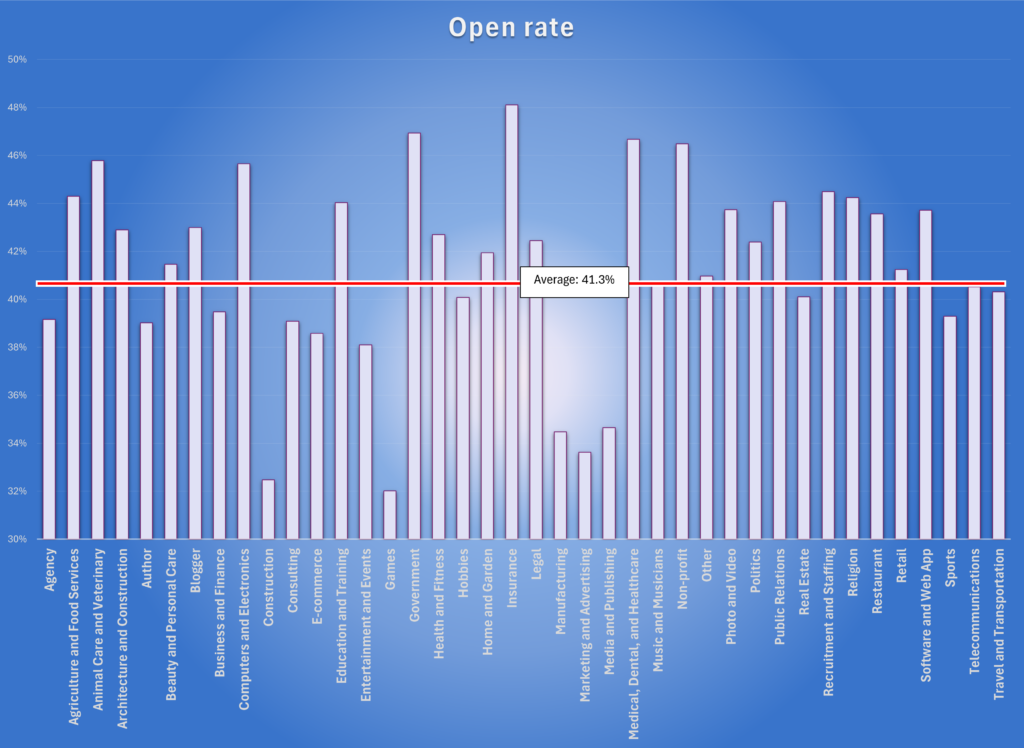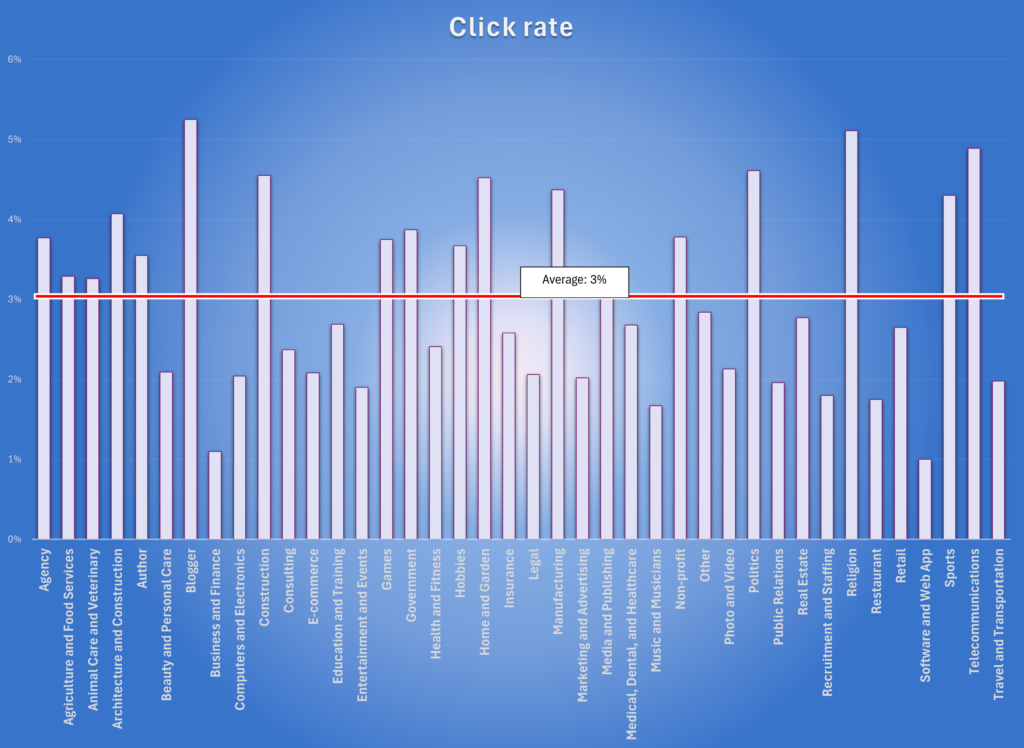Email marketing has long been a cornerstone of digital marketing, with one key question driving strategy: "What’s a good click rate?" While this is still a valuable question, the world of email marketing is evolving, and the true measure of success is shifting. Brands are moving away from one-time, transactional metrics like click rates and focusing more on ongoing, two-way conversations that build deeper customer relationships. But first, let’s answer the question you came here for—what is a good click rate?
What’s a Good Click Rate? Understanding the Benchmarks
Click rates vary widely depending on the industry, and it’s important to know where your brand stands in comparison. Here are some industry benchmarks for open and click rates:
- Open Rates: On average, email open rates range from 30% to 47%, depending on the industry. The lowest open rates are found in the gaming industry, hovering around 32%, while sectors like insurance and government can see rates as high as 47%.
- Click Rates: When it comes to click-through rates (CTR), the figures are generally in the low single digits. For instance, software and web app companies average around 1% click rates, while sectors like blogging and religion can reach 5%. In most industries, a click rate between 2% and 3% is common, especially when dealing with opted-in mailing lists.


These numbers provide a useful benchmark, but here’s where things get interesting—while click and open rates are essential to track, they don’t tell the full story of how your audience is engaging with your brand.
Why Traditional Metrics Like Click Rates Fall Short
Click rates answer a basic question: Did your recipient take an action after reading your email? While useful for assessing immediate interest, click-through rates don’t reveal much about the strength of your relationship with your customers or the potential for ongoing engagement.
In a world where brands are vying for customer attention across multiple channels, one-off interactions like clicks don’t build lasting connections. This is why modern marketers are starting to measure something deeper—ongoing conversations that capture the customer’s journey and reflect their preferences over time.
The Shift to Two-Way Communication: Building Lasting Relationships

Rather than focusing exclusively on getting a customer to take a single action (like a click), the new measure of success revolves around how well you can engage them in a conversation that continues beyond the initial touchpoint.
Here’s why this shift matters:
- Reply Rates as a Key Metric: Instead of just counting clicks, consider tracking reply rates. Replies signal a much higher level of engagement and interest. When customers respond, it opens the door to further communication, allowing you to understand their preferences, needs, and concerns.
- Customer Insights: By fostering ongoing, two-way conversations, you gain more valuable insights into what drives your customers. Each interaction builds on the last, helping you deliver more personalized, relevant content in future communications.
- Relationship-Building: Clicks are transactional. Conversations are relational. By focusing on replies, feedback, and dialogue, you start to build long-term relationships with customers. These relationships breed trust, and over time, loyalty.
Why Two-Way Communication Hasn’t Been Scaled—Until Now
Historically, two-way communication with customers has been expensive and difficult to scale. Brands have relied on automated, one-way emails because it wasn’t feasible to engage in personalized conversations at scale. However, advancements in AI technology have changed that, making it possible to engage in meaningful, two-way communication without skyrocketing costs.
This is where TruAgents comes in. Our platform makes scaling two-way conversations with your customers easy and inexpensive. By leveraging cutting-edge AI, TruAgents enables businesses to automate human-like, always-on communication—turning one-time interactions into ongoing dialogues that deepen customer relationships.
Combining Click Rates with Deeper Metrics for Success
Although two-way communication is the future, metrics like click rates still have their place. They help you understand immediate performance and how well your email drove specific actions. However, these should be viewed as part of a broader strategy that values long-term engagement over one-off interactions.
To create a balance between immediate results and relationship-building, you can use a combination of metrics:
- Click Rates for Short-Term Engagement: These are still useful for measuring the immediate success of a campaign and determining whether your CTA was compelling enough.
- Reply Rates for Long-Term Engagement: Track how often recipients engage in a conversation with your brand. This shows that they’re invested enough to take time to respond, which is a strong indicator of future loyalty.
- Customer Lifetime Value (CLV): This tracks how much value each customer brings to your business over time, and it directly correlates with how well you maintain an ongoing conversation with them.
- Engagement Over Time: Instead of focusing solely on individual campaigns, track how engaged your audience is across multiple emails. Look for patterns in behavior to assess the health of your relationship with them.
Conclusion: From One-Way to Two-Way Conversations
In summary, while click rates provide a helpful benchmark, they’re only part of the equation. The real goal is to foster long-term, two-way communication with your customers. By focusing on metrics like reply rates and engagement over time, you’ll not only boost the effectiveness of your email campaigns but also create lasting relationships that lead to greater customer loyalty and lifetime value.
At TruAgents, we understand this shift and offer a platform designed to help you engage in meaningful, human-like conversations with your customers. Our cutting-edge tools enable businesses to scale two-way communication affordably, helping you build deeper connections and redefine your approach to email marketing.
For more insights on how to improve your email marketing strategy, Schedule a demo today!

